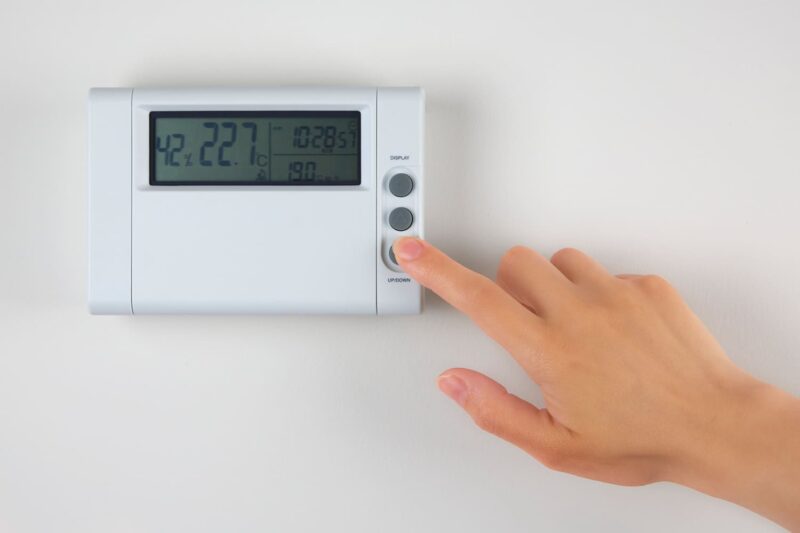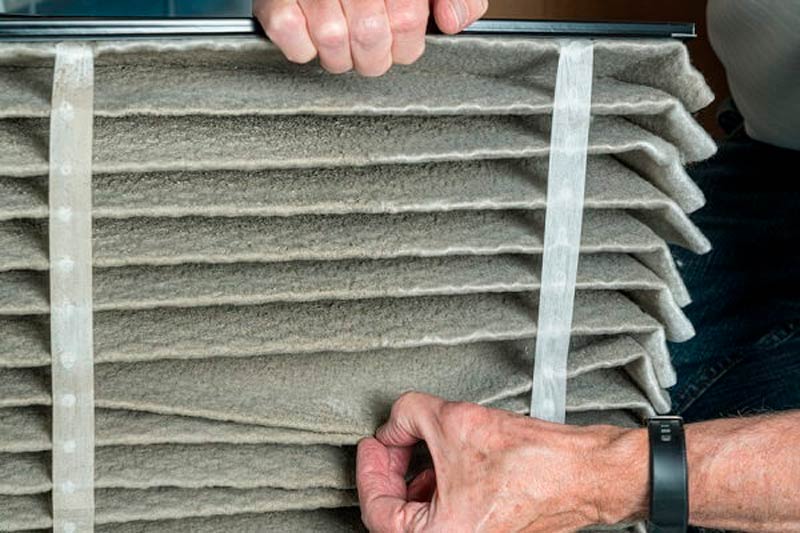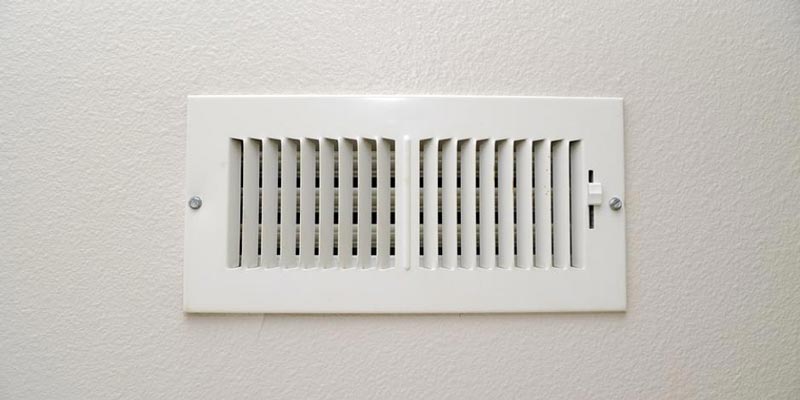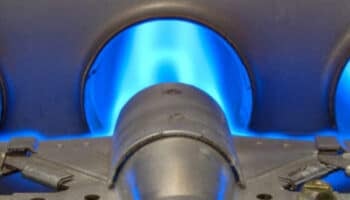Are you wondering how to increase your furnace’s airflow?
You’re not alone! I understand how frustrating it can be when your furnace isn’t working as it should, especially during winter.
Luckily, you’ve come to the right place.
If your furnace has lost all airflow, you’ll need to check the thermostat, replace the filter, ensure the vents are not obstructed, and seal any air leaks. It’s also important to clean the blower fan and check the dampers.
Read on to learn how to fix your furnace’s airflow issues!
Troubleshooting Airflow Issues in Your Furnace: 6 Steps
There are several reasons that can explain why your furnace is experiencing airflow issues. But don’t worry! In this section, I’ll guide you through six simple solutions you can try.
Keep in mind that fixing the problem will require accessing your furnace’s internal components, so please make sure you have the owner’s manual handy.
Can’t find your furnace’s manual? No problem! Click the link below to learn how to find any product’s manual online.
#1 Check the Thermostat
When fixing airflow issues in a furnace, I always start by checking the thermostat.
The thermostat controls when the furnace turns on and off based on your selected settings. Therefore, if the desired temperature matches or is lower than the current room temperature, your furnace won’t start, resulting in a lack of airflow.
To fix the issue, simply check your thermostat and make sure you’ve selected the right settings.

However, if you notice that the thermostat is not signaling the furnace to start, try checking the batteries. Low or dying batteries can cause the thermostat to malfunction.
If your furnace has lost all airflow because it isn’t turning on, try replacing the thermostat. Here’s how:
- Turn off the power at the circuit breaker and remove the front protective panel. You’ll probably need a screwdriver.
- Take a picture of the wiring connections for future reference.
- Carefully disconnect the wires and remove the mounting plate from the wall.
- Install the new mounting plate and connect the wires to the new thermostat. Make sure they’re properly connected.
- Place the front cover in place and restore power.
Once you’ve replaced the thermostat, try adjusting the temperature. If the furnace turns on and has adequate airflow, the problem is solved. However, if the airflow issue persists, you’ll need to check other internal components. Read on to learn more.
#2 Replace the Air Filter
I find that replacing the filter is one of the easiest ways to increase airflow in a furnace.
The air filter is responsible for trapping dust, debris, dander, and other allergens to keep them from entering your furnace and improve air quality. Unfortunately, if you haven’t changed the filter in a while, it can lead to restricted airflow and other performance issues.

Follow these simple instructions to replace the air filter in your furnace:
- Turn off your furnace and locate the filter, which is typically near the fan. Please keep in mind that the exact location of the filter can vary depending on the specific model you own. So, if you can’t find the filter, please click here or read the manufacturer’s manual.
- Gently slide the filter out of its compartment.
- If you have a reusable filter, clean it using a soft brush or a vacuum. You can also rinse it with water and let it air dry.
- If the filter is very dirty or has been used for a long time (more than three months), purchase a replacement.
- Install the new filter. Ensure the arrows on the filter’s frame point in the direction of airflow.
- Once you’ve replaced the air filter, turn your furnace back on.
Note: Remember that the air filter needs to be replaced every 1 to 3 months to ensure your furnace’s efficiency.
#3 Inspect the Vents
If your furnace has lost all airflow, it’s important to check for obstructions in the air vents.
The vents are the openings in your rooms that distribute warm air from your furnace. Obstructions can restrict airflow, cause uneven heating, and make your furnace work harder.
To fix the airflow issue, inspect the vents in each room. Make sure there’s no furniture or curtains blocking them. If you find any obstructions, consider rearranging the room layout so that the vents are clear.

While you’re at it, I recommend cleaning the air vents since dust and debris can also restrict airflow.
To clean the vents, you’ll need to:
- Turn off your furnace.
- Vacuum the area around the vent cover to remove any dust. You can also use a soft brush.
- Use a screwdriver to remove the vent cover.
- Once you’ve removed the vent cover, clean it with warm, soapy water.
- Rinse the cover thoroughly and let it dry to prevent mold growth.
- Put the air vent cover back in place.
Once you’ve cleaned the vent covers, make sure they’re properly aligned to ensure the best possible airflow.
#4 Seal Any Air Leaks
To fix the low airflow issue in your furnace, I also recommend checking the ductwork.
The ducts are responsible for transporting the heated air from the furnace to different rooms in your home. When there are leaks in the ductwork, the warm air escapes, reducing airflow.
Air leaks are quite common, especially in older homes, as the duct materials tend to deteriorate over time. Improper installation can also cause the issue.
To inspect the ductwork, please turn off the furnace and look for any visible signs of damage using a flashlight. If you notice a gap or an air leak, you must seal it with mastic sealant or metal tape. Avoid using duct tape, as it tends to loosen over time.
Sometimes, dust and debris can accumulate in the ducts, so it’s also important to use a vacuum or long brush to remove any obstructions.
Keep in mind that inspecting, cleaning, and sealing the ductwork can be a bit tricky. So, if you’re not an experienced DIYer, it’s best to call a licensed HVAC technician. They have the necessary tools to seal the air leaks safely.
#5 Clean the Blower Fan
When fixing a furnace that has lost all airflow, I usually advise examining the blower fan.
The blower fan is one of the most important components in your furnace, as it’s responsible for blowing hot air through the ducts and into your home. Unfortunately, if the blower fan is dirty or obstructed, airflow will be restricted.
Follow these simple steps to clean the blower fan:
- Turn off the power and remove the access panels. You’ll probably need to use a screwdriver.
- Take a picture of the wiring connections for future reference.
- Carefully disconnect the necessary wires to access the blower fan.
- Vacuum the blower compartment and use a soft brush to clean the fan blades. You can also use compressed air. I recommend wearing a face mask while cleaning the blower fan.
- Slide the blower fan back into place.
- Reconnect the wires you previously removed and reattach the access panels.
- Turn your furnace back on. Then, check the airflow.
Bear in mind that accessing the blower fan can be quite challenging, so if you’re not comfortable doing it yourself, consider hiring a licensed HVAC technician.
#6 Check the Dampers
If you’ve tried all the fixes mentioned above, but your furnace is still struggling with airflow issues, then you need to inspect the dampers inside the ducts.
A damper is a small plate that opens or closes to regulate the flow of air to specific zones in your home. A partially or fully closed damper could be the reason your furnace has lost all airflow.
It’s worth noting that not all HVAC systems have dampers. Dampers are more common in modern and larger homes or buildings.
If your furnace does have a damper, please access it and check its position. Manual dampers typically have a handle or lever that should be parallel to the duct. If it’s perpendicular, it indicates the damper is closed and restricting airflow.
However, if your furnace has an automatic damper, please adjust the thermostat for the associated zone. If there’s still a lack of airflow, the actuator probably needs to be replaced. Repairing an automatic damper can be a bit tricky, so consider calling a professional.
Wrapping Up: Steps to Increase Your Furnace’s Airflow
That about covers it! Hopefully, now you know how to fix your furnace’s airflow issues.
Remember that if your furnace has lost all airflow, you’ll need to make sure you’ve selected the right settings on the thermostat, clean the air filter, and inspect the vents. Don’t forget that it’s also important to seal any air leaks in the ducts, check the dampers, and clean the blower fan.
Thank you so much for taking the time to read this article. If you’ve found it helpful, please check out our related guides below.
Have a wonderful rest of the day!








